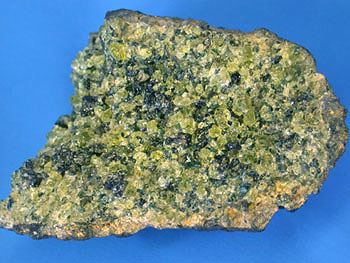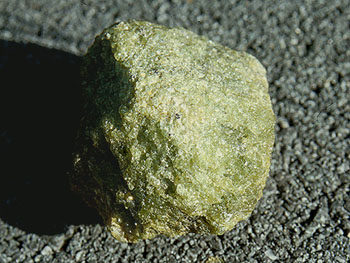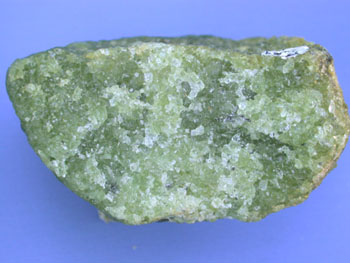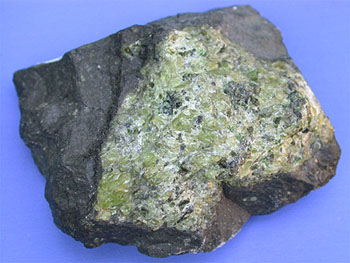|
This nugget consists largely of green olivine crystals and black pyroxenes. It is worth clicking on the image to get a closer look at the typically irregular shape of the olivine grains.
This is a rock called peridotite (= olivine and pyroxene), which forms much of the upper mantle.
|

|
|
This lump is more typical of samples seen in beginning geology labs. The individual olivine grains are the size of fine sand.
A rock consisting of pure olivine is called dunite.
|
 |
|
Here is another pale-green sample typical of beginning geology labs. Note the granular texture made by the many olivine grains that have grown together.
|

|
|
This piece of peridotite is still contained within its block of basalt. As the basaltic magma rose through the mantle, it ripped off this chunk of mantle and brought it to the surface.
When you zoom in on the picture, you can see tiny little bright green grains and some black grains; both are pyroxene.
|

|




